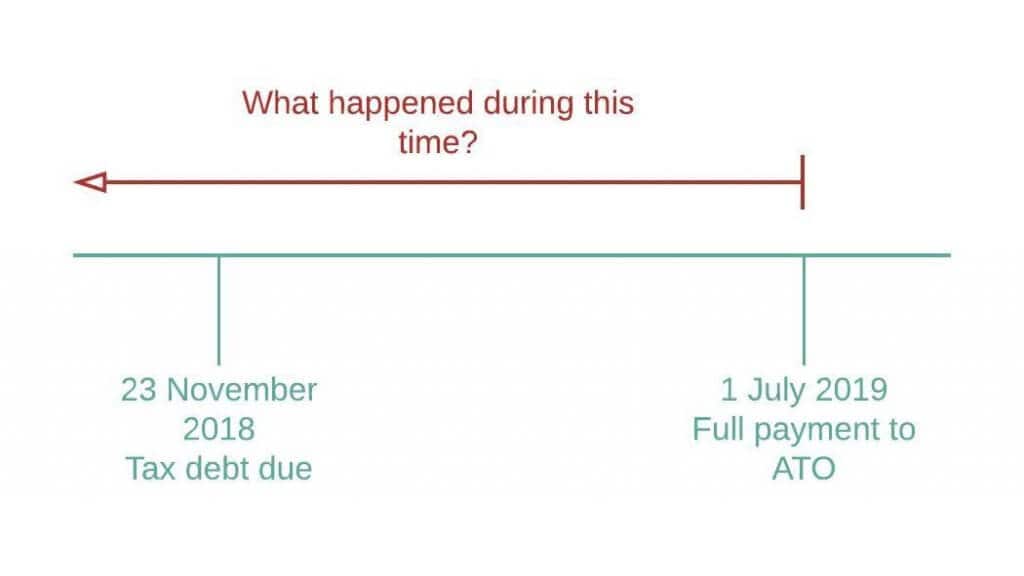- TAX LAWYERS, TAX ADVISORY, TAX COMPLIANCE, EXPATS - SYDNEY, BRISBANE, MELBOURNE, CANBERRA
- 1300 334 518
- admin@waterhouselawyers.com.au
Looking for a template letter to make a remission request to the ATO?
Tax Debt
Looking for a template letter to make a remission request to the ATO?
There’s a template letter online for making a remission request to the ATO for the general interest charge. It’s designed for accountants to use for their clients.
I do not recommend using this template letter unless you’re an accountant who knows what you’re doing and you have solid writing skills.
Why don’t I recommend using the template?
Because there is no formula for GIC remission requests. People end up with unpaid tax debts for a wide range of reasons. Often, those reasons are deeply personal – for example, a long battle with mental health issues, or caring for sick children. No template letter can help you to get this message across. Instead, the letter needs to be tailored to your situation.
Tips for writing a remission request letter
I’ve been writing remission request letters for a decade or so now. I believe that most people should get help from someone like me when writing a remission request to the ATO. This is because, unlike many other ATO decisions, there is no automatic right of review if the ATO says ‘no’. So, if your request is refused, it can be difficult to salvage your tax debt situation.
But I know the reality is that a lot of people want to have a crack at making the request themselves. If this is you, then these tips may help you to write your letter.
1. Understand when the ATO can remit the GIC
The ATO’s job is to administer the tax law. This means that it can only remit the general interest charge in the circumstances allowed for by the law.
You can read more about the four categories of general interest charge remissions here.
2. Figure out what you want to be remitted
The most important thing is to calculate what general interest charges you want to be remitted, and understand when these amounts accrued.
The way I work this out is by asking my clients to send me a Transaction List downloaded from MyGov or the Business Portal. I ask them to send this to me in CSV format, which I can open in Excel. Then I can easily sort through the transactions to understand the time frames, and to add up the general interest charge that has been incurred.
You may have general interest charge in more than one account, so you should check all accounts in MyGov or the Business Portal.
Once I have this information, I add it towards the beginning of the letter I write to the ATO. So, one of my opening paragraphs states how much general interest charge I am asking the ATO to remit, and the period over which this general interest charge was accrued.
The time at which the charges accrued will tell you the timeframe that you should focus on for the rest of your letter.
For example, if you had a tax debt due on 23 November 2018, but you didn’t pay it until 1 July 2019, then the general interest charge would have accrued between those two dates. This is the period you should focus on in your letter, plus the months leading up to the due date.

3. Create a timeline
Use the information from the above step to guide you in writing a timeline of events.
What were the triggers that stopped you from paying your debt on time? When did these happen? What steps did you take to resolve these? Write this all out in chronological order.
This is going to be very different for everyone, as it will depend on the actual events that triggered the delay in paying the tax.
When you have your timeline, you can start working on your letter.
4. Tell your story in detail
Your letter should tell your story in a clear and easy to follow way. Make it easy for the ATO to help you. If you chop and change all over the place and leave important parts out, then it will be hard for the ATO to understand your story and why it justifies a remission of the general interest charge.
Usually, I would recommend writing the letter over several sessions. This will help you to make sure you include everything relevant and explain it coherently.
5. Include evidence if you have it
Depending on the circumstances, there may be some evidence you can add to your letter to support your position.
For example, if you ran a business and the shop burnt down, you will have police reports or insurance documents that will show this. Or, if you’ve been unwell, a letter from your doctor could be helpful.
Think about what you can include that supports your position. But, don’t go overboard. Sending a 100+ page report with copies of doctor’s appointment confirmations and pictures of medication prescriptions is not going to be helpful.
When to get help with your letter
I recommend that most people get help with their letter, but I know that a lot of people prefer the ‘DIY’ approach.
You should get help if you are having trouble writing the letter. Not everyone is good at writing, and that’s okay. We all have different skills.
You should also get help if you are too close to the issues to be objective. If you’ve lived in a difficult situation for a long time, you can start to accept your circumstances as ‘normal’. This is a coping mechanism, and it’s understandable. But it doesn’t help you when you then have to try to convey the difficulty of your circumstances in writing.
You may need to tell your story to someone like me. I will ask questions. Honestly, I may prod and poke at issues to the point that it’s uncomfortable. But it’s all for a good reason. I do it to make sure I know exactly what difficulties you have faced so that I can then explain to the ATO how you meet the criteria for a remission of the general interest charge.
I cannot tell you the number of times I have written a letter on a client’s behalf and had them say something like ‘I could never have written that myself. You took something so complicated and made it easy to understand’.
The reason I can do this is that I have years of experience. I know what questions to ask and I know how to write the letter so that the ATO has the information it needs to consider a remission request.
Credentials
Recognition



